Office workers race against the clock every morning, and spending extra time on clothing can feel like a nightmare. In response, many brands have launched easy-care wrinkle-resistant shirts. For example, Uniqlo's wrinkle-resistant shirts have seen increasing sales each year, becoming popular among business professionals. But how do these wrinkle-resistant shirts work?
Most users of suits and shirts know that ironing can be a hassle, often requiring considerable time before putting on a shirt. As fabric technology evolves, wrinkle-resistant materials are becoming more prevalent, particularly in shirts, catering to the fast-paced lifestyles of modern individuals. So, how do these wrinkle-resistant shirts remain crisp without ironing? And how should we clean and maintain them? This article will explain in detail.

The Principles of Wrinkle-Resistant Shirts
The earliest method for creating wrinkle-resistant fabrics involved the use of formaldehyde (formalin) as a wrinkle-proofing agent. Formaldehyde is a powerful preservative, and when added to fabric treatments, it provides wrinkle resistance and flame retardancy while making printed patterns last longer. However, this method does not alter the fibers themselves, which means that many garments marketed as "100% cotton wrinkle-free" often rely on these chemical treatments. Unfortunately, prolonged skin contact with these chemically-treated fabrics can lead to allergic reactions.
Later, manufacturers discovered that by improving traditional cotton fabrics, they could achieve wrinkle resistance without harmful chemicals. This process, known as mercerization, uses alkaline solutions to treat cotton yarn, enhancing its strength and reducing pilling, while also imparting a natural luster. Importantly, this treatment does not compromise the fabric's moisture-wicking and breathability properties. Treated cotton now exhibits wrinkle- and shrink-resistant qualities, challenging the stereotype that cotton easily wrinkles.
Today, the most common wrinkle-resistant shirts incorporate elastic fibers and woven fabrics, significantly reducing wrinkles after washing. Elastic fibers are a focal point for many manufacturers, promising to enhance the comfort and softness of wrinkle-resistant shirts even further.
 Differences Between Early and Modern Wrinkle-Resistant Shirts
Differences Between Early and Modern Wrinkle-Resistant Shirts
In the past, most wrinkle-resistant shirts were made from polyester fibers and treated with wrinkle agents. These shirts often lacked firmness and breathability, leading to discomfort and odor after a day of wear. However, advancements in technology have introduced liquid nitrogen-treated wrinkle-resistant shirts in recent years. These modern shirts primarily use cotton, which is more breathable than polyester. Compared to earlier versions, these new wrinkle-resistant shirts provide superior wrinkle resistance.
That said, the wrinkle-resistant effect diminishes with repeated washes. To combat this, ultra-fine polyester fiber shirts have been developed, relying on the inherent rebound properties of the yarns for their wrinkle resistance. This means their effectiveness doesn’t decrease with frequent laundering.
Care and Maintenance of Wrinkle-Resistant Shirts
To ensure the longevity of your wrinkle-resistant shirts, keep the following care tips in mind:
1. Washing: Place shirts in a laundry net and always sort colors to prevent dye transfer.
2. Check Labels: Before washing, verify the care label on the garment. Avoid exceeding the maximum temperature indicated, as high heat can damage the fabric structure. Additionally, reduce the spin time in the washing machine to preserve the shirt’s integrity.

3.After the washing machine stops, promptly remove the shirts and hang them to dry. The best method is to turn the shirts inside out and clip the hem and sleeves, using a suitable wide hanger for drying. Button up the shirt to keep it flat and maintain its shape.
4.You can iron the shirt at a low temperature the day before you plan to wear it.

5.If there are stains on the collar or sleeves, it's recommended to hand wash those areas with warm water for effective cleaning.
Can Wrinkle-Free Shirts Be Custom-Made?
For business professionals, a well-fitted, sharp outfit significantly enhances trust and professionalism. Therefore, wrinkle-free shirts are definitely an essential item for custom tailoring.
Custom-made wrinkle-free shirts allow you to choose the most suitable fabric based on your needs, saving busy professionals a lot of hassle and time. During the tailoring process, skilled artisans take precise measurements of each individual's body, selecting the appropriate fabric thickness. The seams are handled with meticulous craftsmanship, ensuring a structured fit that maintains its shape and resists wrinkling even after prolonged wear.
Brands like Leader Tailor offer thousands of imported high-quality fabrics, ensuring comfort, breathability, and a natural luster that keeps you looking fresh and sharp.
Related Reading: Curious about the cost of custom shirts? Many who have tried it say they can't go back!
Now that you understand the benefits of wrinkle-free shirts, along with their high-quality feel and comfort, it's wise for office workers and business professionals to keep 2-3 wrinkle-free shirts on hand for easy rotation. This way, even during busy schedules, travel, or last-minute meetings, you can always look polished and ready to meet clients.




